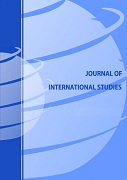CAN PUBLIC DEBT HARM SOCIAL DEVELOPMENT? EVIDENCE FROM THE ASIAN-PACIFIC REGION
CAN PUBLIC DEBT HARM SOCIAL DEVELOPMENT? EVIDENCE FROM THE ASIAN-PACIFIC REGION
Author(s): Le Thanh TungSubject(s): Geography, Regional studies, National Economy, Social development, Public Finances, Socio-Economic Research
Published by: Fundacja Centrum Badań Socjologicznych
Keywords: public debt; GDP per capita; domestic investment; poverty; inequality; Gini; social development; Asia-Pacific region;
Summary/Abstract: This paper aims to investigate the effect of public debt on some social development indicators with a sample including 17 developing and emerging countries in the Asia-Pacific region over the period of 1980-2018. The panel regression method is applied with both fixed-effects and random-effects models. Our study finds that public debt has a negative impact on some main social development indicators of the economies. More specifically, public debt has a negative and significant effect on the growth rate of GDP per capita. Public debt also has a negative impact on domestic investment, however, the coefficients are not statistically significant. Besides, public debt has a positive and significant impact on the poverty rate. Although public debt has a negative impact on inequality, it seems that all income groups are poorer, so the reduction of inequality (denoted by the Gini index) is understandable. Finally, the panel Granger causal test points out that high rate of poverty seems to be a good reason to persuade governments to borrow more in the future. Following our result, policy makers need to be more careful when they use public debt as a common tool to support economic activities in the future.
Journal: Journal of International Studies
- Issue Year: 13/2020
- Issue No: 2
- Page Range: 48-61
- Page Count: 14
- Language: English

